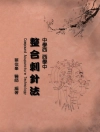The basic anatomy and physiology of the urinary tract, the validity of animal models and other methodological considerations as well as a range of potential therapeutic targets are comprehensively reviewed by leading international experts, making this a unique reference source for basic scientists and research-minded clinicians alike
Inhaltsverzeichnis
Preface.- Overview on the lower urinary tract. Animal models in overactive bladder research. Animal models of stress urinary incontinence. Animal models for benign prostatic hyperplasia. Use of functional imaging to monitor central control of voiding in humans. Neuroanatomy of the lower urinary tract. Anatomy and histology of the lower urinary tract. Neurophysiology of the lower urinary tract. Afferent mechanism in the urinary tract. Urothelial signaling. Interstitial cells of Cajal in the urinary tract. Potential Applications of gene therapy/transfer to the treatment of lower urinary tract diseases/disorders. Specific pharmacokinetic aspects of the urinary tract. α1-Adrenoceptors in the urinary tract. β-Adrenergic receptor subtypes in the urinary tract. Muscarinic acetylcholine receptors in the urinary tract. Modulation of urinary bladder innervation: TRPV1 and botulinum toxin A. Ion channel modulators and urinary tract function. Neuropeptides in lower urinary tract function. Cannabinoid: potential targets for the treatment of bladder dysfunction. Vasopressin receptors in voiding dysfunction. ATP & P2X purinoceptors in urinary tract disorders. Cyclic nucleotide metabolism including nitric oxide and phosphodiesterase-related targets in the lower urinary tract. Rho kinase a common final pathway of various contractile bladder and ureter stimuli.












